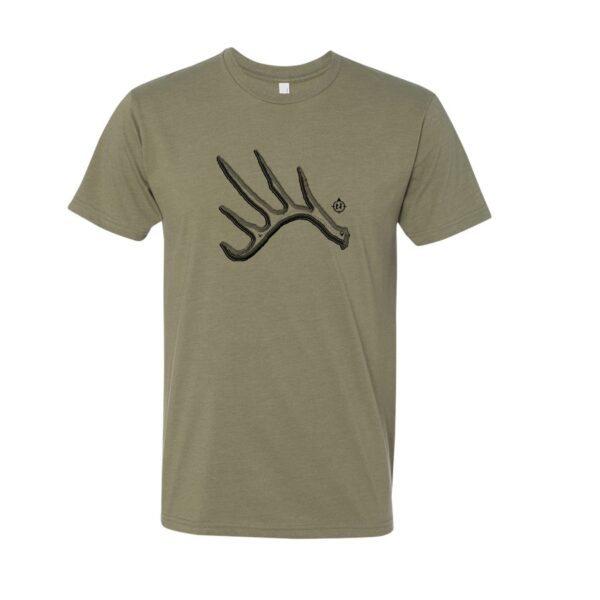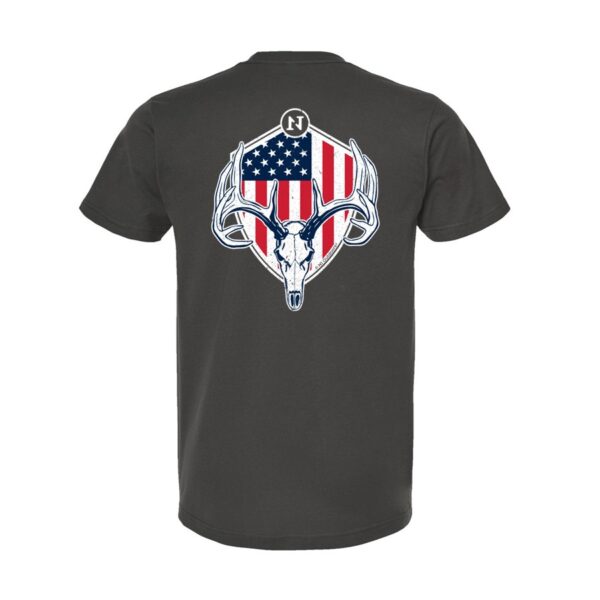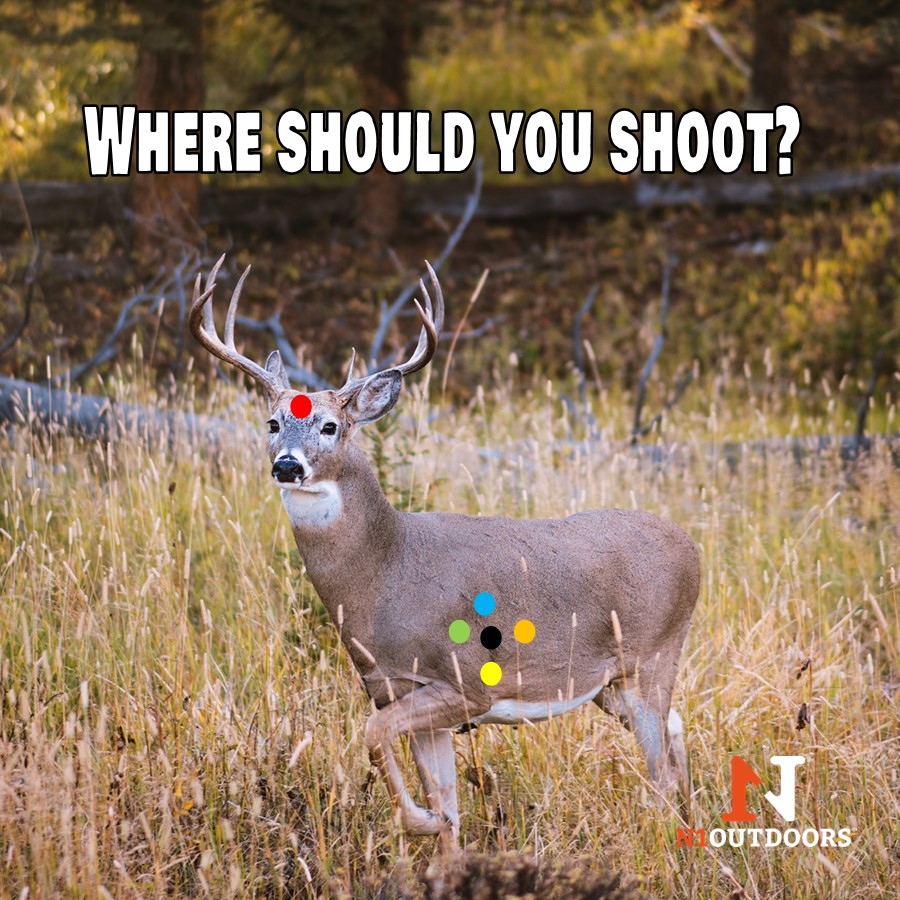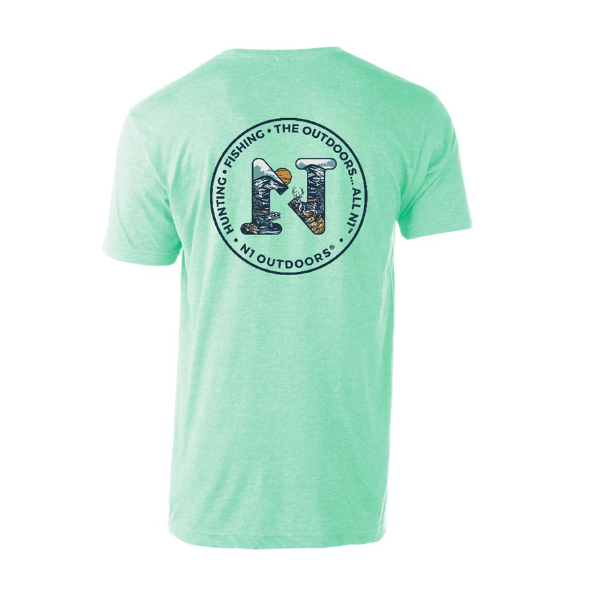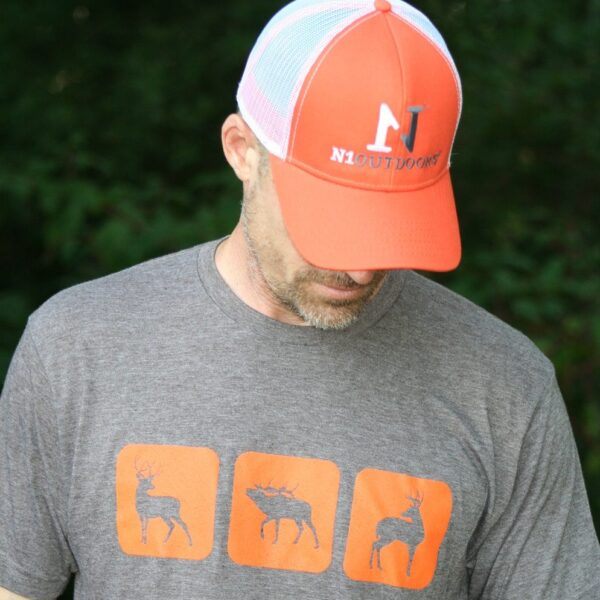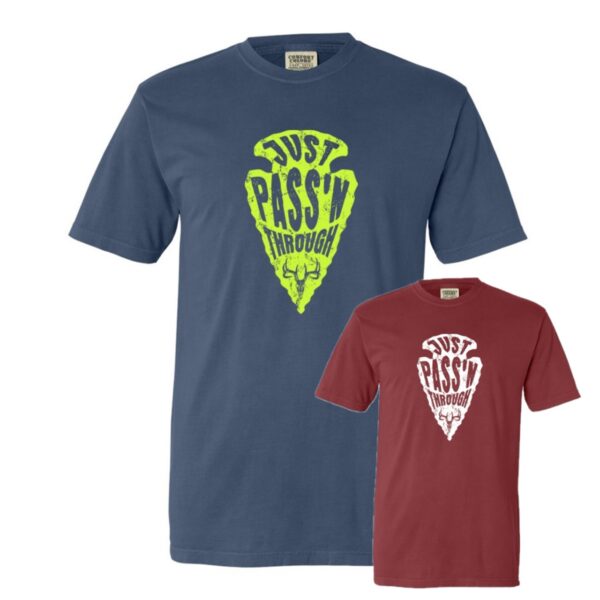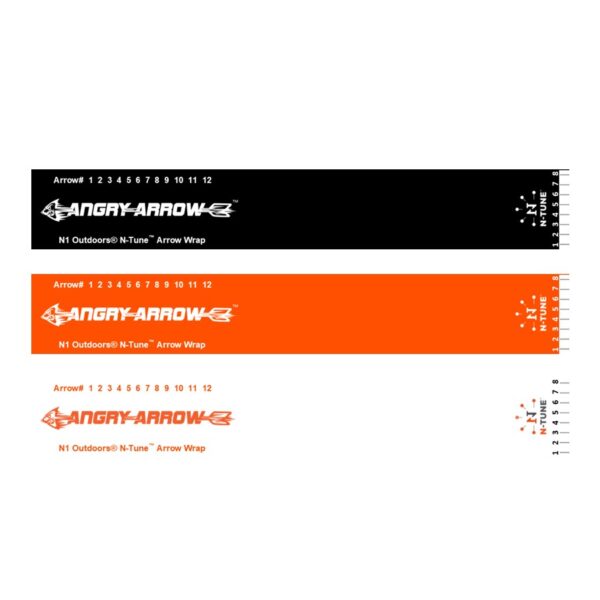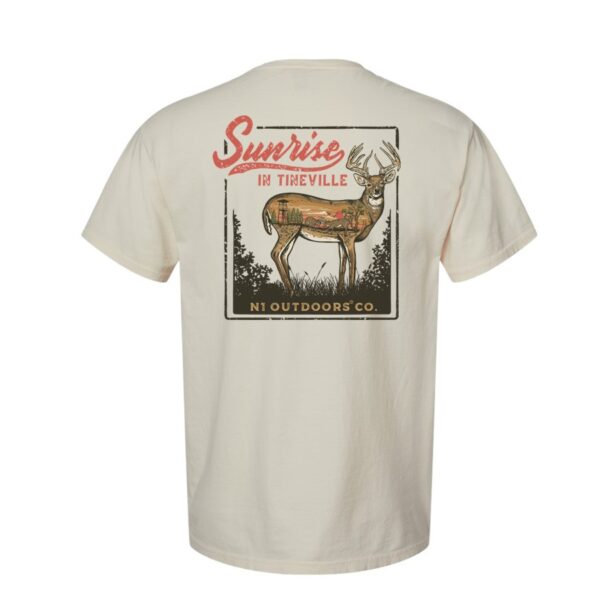In this review, I cover the XOP Ambush Evolution Sit and Climb stand.
I’ve got some things I like about the stand. I’ve also got some things that I would change, to improve the stand.
So, let’s get to it!
The XOP Ambush Evolution Sit-And-Climb Review
I hunted with this stand several times this year, because I wanted something that would fold down – that wouldn’t have anything in front of me that would inhibit my bow shots.
I’ve used other climbers that have a rail around it that at times gave me problems.
Unpacking the Ambush Evolution
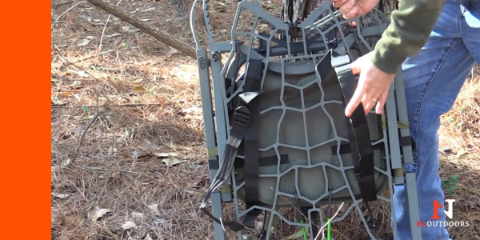
The XOP Ambush Evolution Sit-And-Climb comes packed up really nicely. It has some bungee straps that hold it together well. It and it comes from the factory with some “get you by” shoulder straps. They have XOP sales after-market shoulder strap system as well (see below photo).
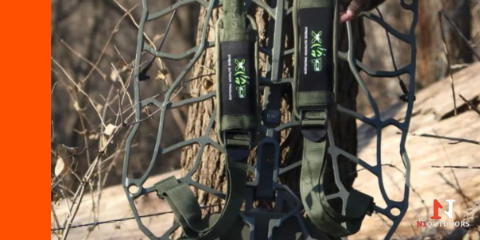
Here’s a look at the more “deluxe” version of the shoulder straps from that you can buy from XOP.
-
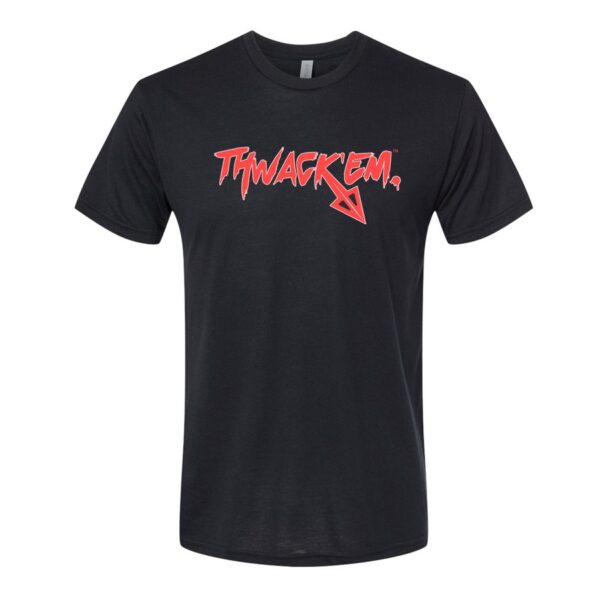
N1 Outdoors® Thwack’Em™ Bowhunting Tee
Price range: $24.99 through $30.99 Select options This product has multiple variants. The options may be chosen on the product page -
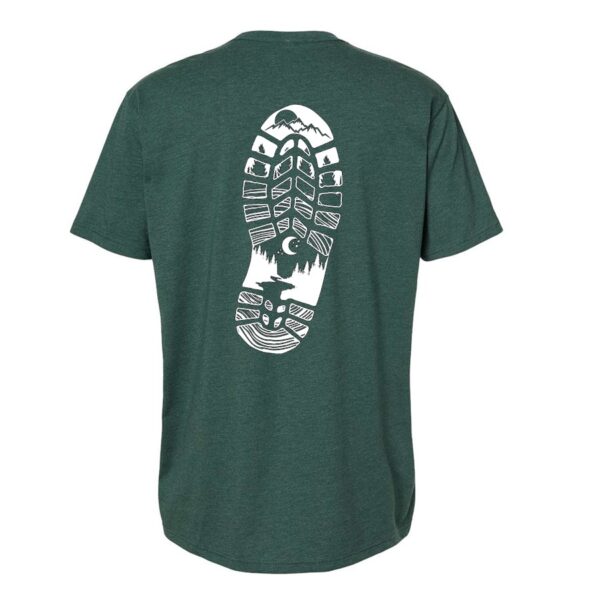
N1 Outdoors® “Outdoor Npressions™” Boot Print Tee
Price range: $24.99 through $28.99 Select options This product has multiple variants. The options may be chosen on the product page -

N1 Outdoors® HUNT. Tee (Various Colors)
Price range: $24.99 through $28.99 Select options This product has multiple variants. The options may be chosen on the product page
Below, you can see how tightly and compact it is. It’s less than 4″ wide, and when you put it on your back and carry it through the woods, because of the way the bungee strap pulls the cables down, it would not get hung up on vines, brush, or tree limbs.
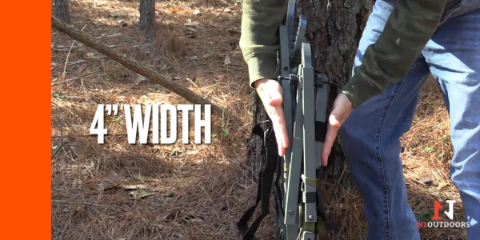
The XOP Ambush Evolution folds up to an incredibly thin 4 inches!
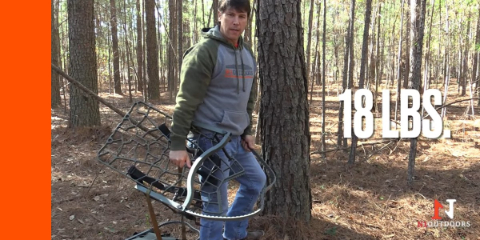
One of the best things I like about the XOP Ambush Evolution is the weight. it weighs only 18 lbs and is the lightest stand I’ve ever hunted from.
Attaching To The Tree
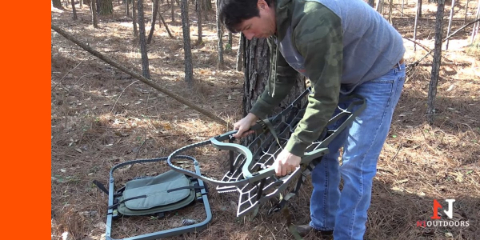
To open the stand from the folded position, you simply slide the knob attachments toward the front of the stand until they stop…
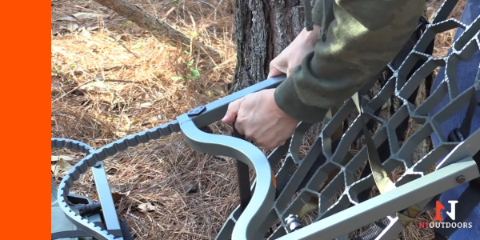
…then, you tighten down the knobs to secure the side bars into place.
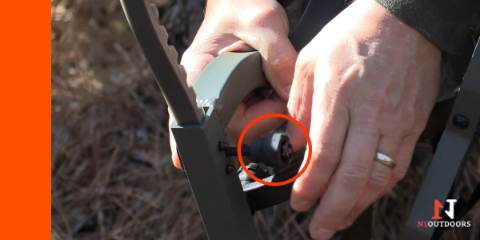
Unlocking and adjusting the strap that goes around the tree is pretty simple… just loosen the knob under the straps, and then push up to disengage. Once you have the strap to your desired length, you tighten the knob back down.
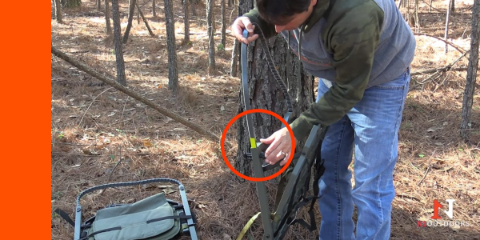
The yellow “danger zone” is a good reminder not to lock the strap in place this far out.
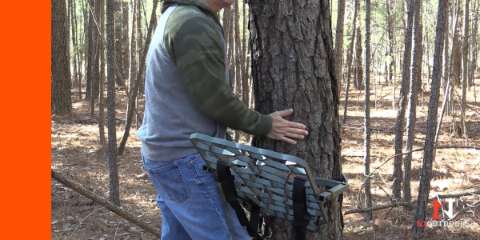
When attaching to the tree, you need to set the strap circumference so that when you reach your desired height, the platform will be at a 90 degree angle to the tree.
One nice thing about the cables on the Ambush Evolution is that when they’re on the tree, they will get tight, but they don’t dig in like some other types of deer stands, and that’s by design. You don’t want to dig in to the tree and damage it, and possibly kill it.
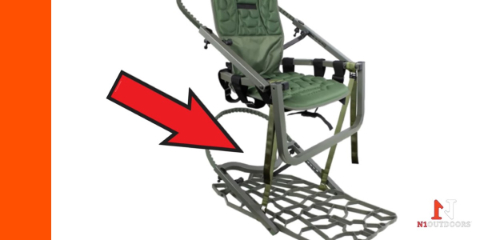
The stand has a cool feature where the cross brace is curved, which allows easier attachment to the tree as well as easier climbing.
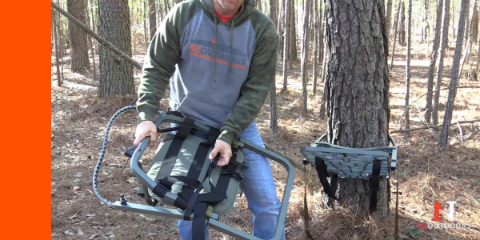
Here’s a look at the top half of the XOP Ambush Evolution before unpacking to attach to the tree.
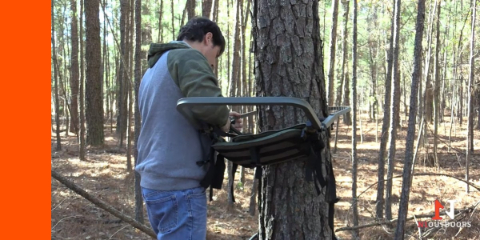
When you wrap the straps around the tree, you realize… boy, those straps nice and quiet!
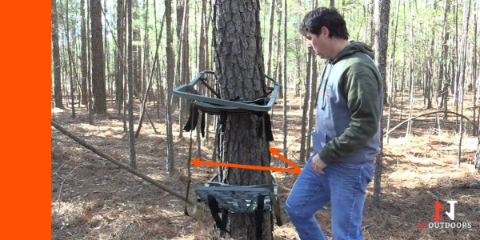
These straps connect the top half to the bottom half while climbing so that you don’t accidentally drop the bottom half and have it fall down the tree.
-

N1 Outdoors® N-Tune™ Nock Tuning Reflective Arrow Wraps – Purple Diamonds™
Price range: $18.99 through $27.99 Select options This product has multiple variants. The options may be chosen on the product page -

N1 Outdoors® N-Tune™ Nock Tuning Reflective Arrow Wraps – Smoke ‘Em™
Price range: $18.99 through $27.99 Select options This product has multiple variants. The options may be chosen on the product page -
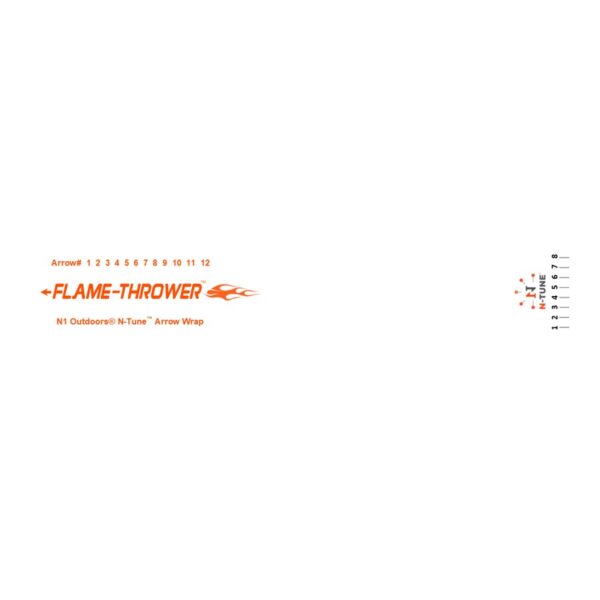
N1 Outdoors® N-Tune™ Nock Tuning Reflective Arrow Wraps – Flame Thrower™
Price range: $18.99 through $27.99 Select options This product has multiple variants. The options may be chosen on the product page
Climbing The Tree
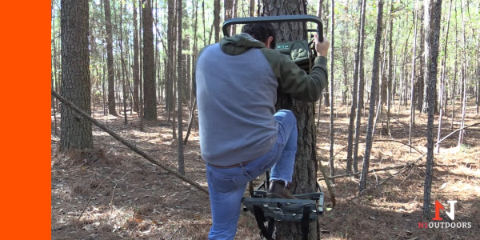
You need to get inside of the top half of the climber to begin your ascent.
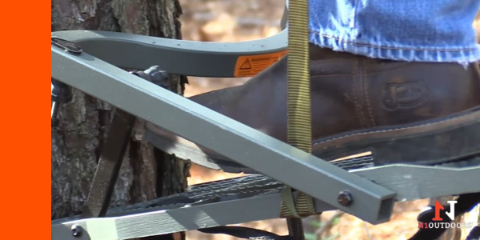
In this review, I’ve got on these cowboy boots. But, that’s not what I hunt in. I prefer to hunt in insulated rubber boots. And this stand doesn’t give a whole lot of clearance between the base of the stand and where you need to get your foot. And my rubber boots don’t go in here very easily.
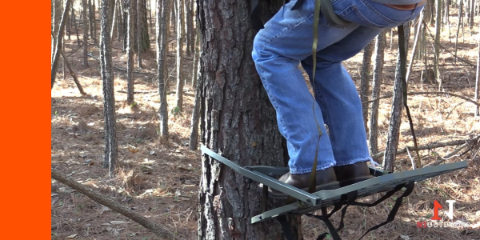
As you sit on the bar, you put your feet under the crossbar… this is how you will lift the bottom portion up the tree…
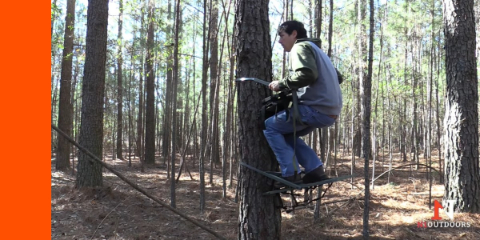
and just move the bottom platform up the tree a few feet at a time until you reach your desired height.
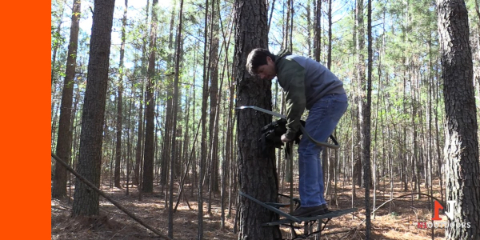
Once you get the stand the height that you want to hunt at, the first thing you do is to tighten the safety straps down as tight as you can get them. This will prevent the top from coming down since it can’t be lifted while strapped tight. And it will keep the bottom connected to the top as well.
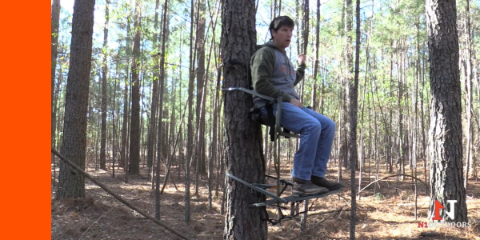
You can see how my knees are just a little bit bent. I’m going to have my bow on a hanger, and I want my legs to have only a little bit of bend in them so whenever I go to stand up, I don’t have as far to go.
The sit and climb bar is designed for bow hunters to step through it and fold it under out of your way.
And that leaves me to one of the things that I would change just a little bit about the stand. I would prefer a larger seat, as my hips are squeezed a bit, due to the size of the factory seat.
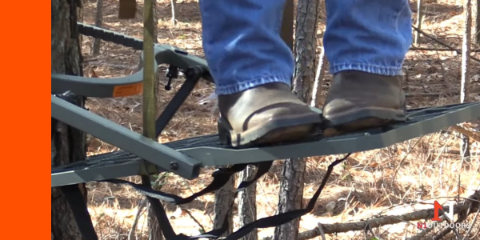
The platform doesn’t give you a ton of room to move around, but again, lightweight is often a tradeoff with size.
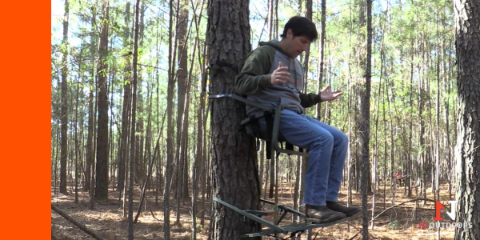
The seat width created a tighter fit on my hips than I would have liked, but there are some aftermarket mesh seat options out there that may help remedy this.
Another “con” to this stand is that the seat is a very tight fit on my hips, and it’s not the most comfortable seat.
Of course, there are gives and takes with how light and portable a stand can be and still be as comfortable as a larger and heavier stand might be.
Final Thoughts On XOP The Ambush Evolution Sit-And-Climb Deer Stand
Overall, I like the Ambush Evolution Sit-And-Climb stand from XOP. It’s performed really well for me on several hunts. This is by far the most compact stand I’ve ever hunted in. I also love how light it is.
The only improvements I would make is foot clearance under the crossbar, as well as the “hip squeeze” I experienced with the factory seat.
I hope this review has helped you make a choice on whether or not you would use this stand. I would recommend it to anybody who likes to run and gun with a light setup, has a good bit of walking to do, or has to carry camera equipment with them. Because the stand is so light, it makes the walk into your hunting spot easier.
Happy hunting, and please always wear a safety harness!
– Josh Wells, N1 Outdoors® Co-Founder





